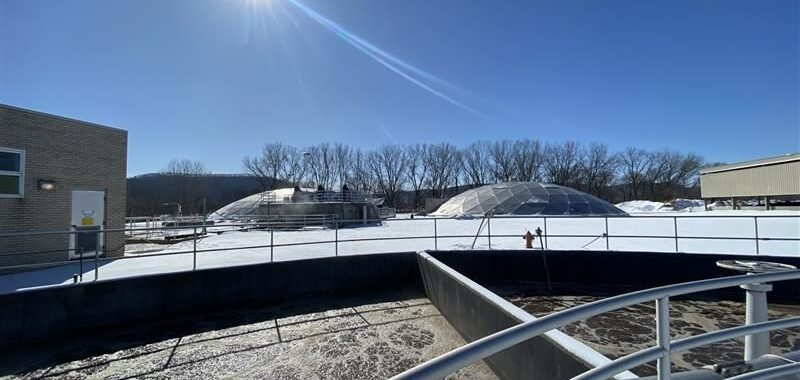Case Study – Cold Weather Nitrification for Winona, MN

Cold Weather Nitrification
THE CHALLENGE:
Winona, Minnesota
Filamentous outbreaks can cripple wastewater plants for weeks or even months. At Winona WWTP, bulking sludge and poor settleability had been a constant headache. The only lifeline? Heavy chlorine dosing – sometimes for weeks on end. Meanwhile, plant staff were eager to get rid of their trickling filters that had reached the end of their useful life. But, until the facility was rated for treatment requirements without them, those relics had to stay put. With the looming possibility of a strict ammonia (NH₃) and total nitrogen (TN) permit, Winona WWTP was in prep mode – searching for cost-effective solutions that wouldn’t force the city to spend tens of millions on a large new infrastructure project. Their challenge: find a technology to stabilize treatment, enhance settleability, and achieve year-round nitrification with minimal tankage added to their aerobic only configuration.
WHY THE MOB PROCESS WAS CHOSEN:
The MOB process was selected for its resilience to biological disruptions, ability to intensify secondary treatment, and its proven performance in cold-weather nitrification, a critical factor given Minnesota’s harsh winters. Its effectiveness in stabilizing SVI fluctuations from filamentous outbreaks led to shorter, lower-dosage chlorination events and improved settleability, allowing Winona WWTP to withstand high-flow events without biological washout. Within two months of installing MOB, complete nitrification was achieved and sustained through the coldest months of the year.
Rigorous nutrient monitoring was implemented to evaluate the facility’s readiness for potential nitrogen permits – revealing intermittent, but substantial industrial ammonia loadings. Despite these high-ammonia slug loads occurring just before winter, nitrification remained complete and consistent. As the trial successfully met all its goals six months into through the trial, time was allotted to explore TN removal strategies, resulting in partial TN removal, which was achieved without the need for an anoxic selector.

WHAT WAS ACHIEVED:
- Sustained complete nitrification, even in winter months
- Prevention of solids washout during high-flow events
- Retrofit installation without facility downtime
- Rapid recovery from filamentous outbreaks and resilience against sporadic nutrient surges
Let us help you achieve your treatment goals!
Call: (919) 615-1205 | Email: sales@nuvodaus.com
